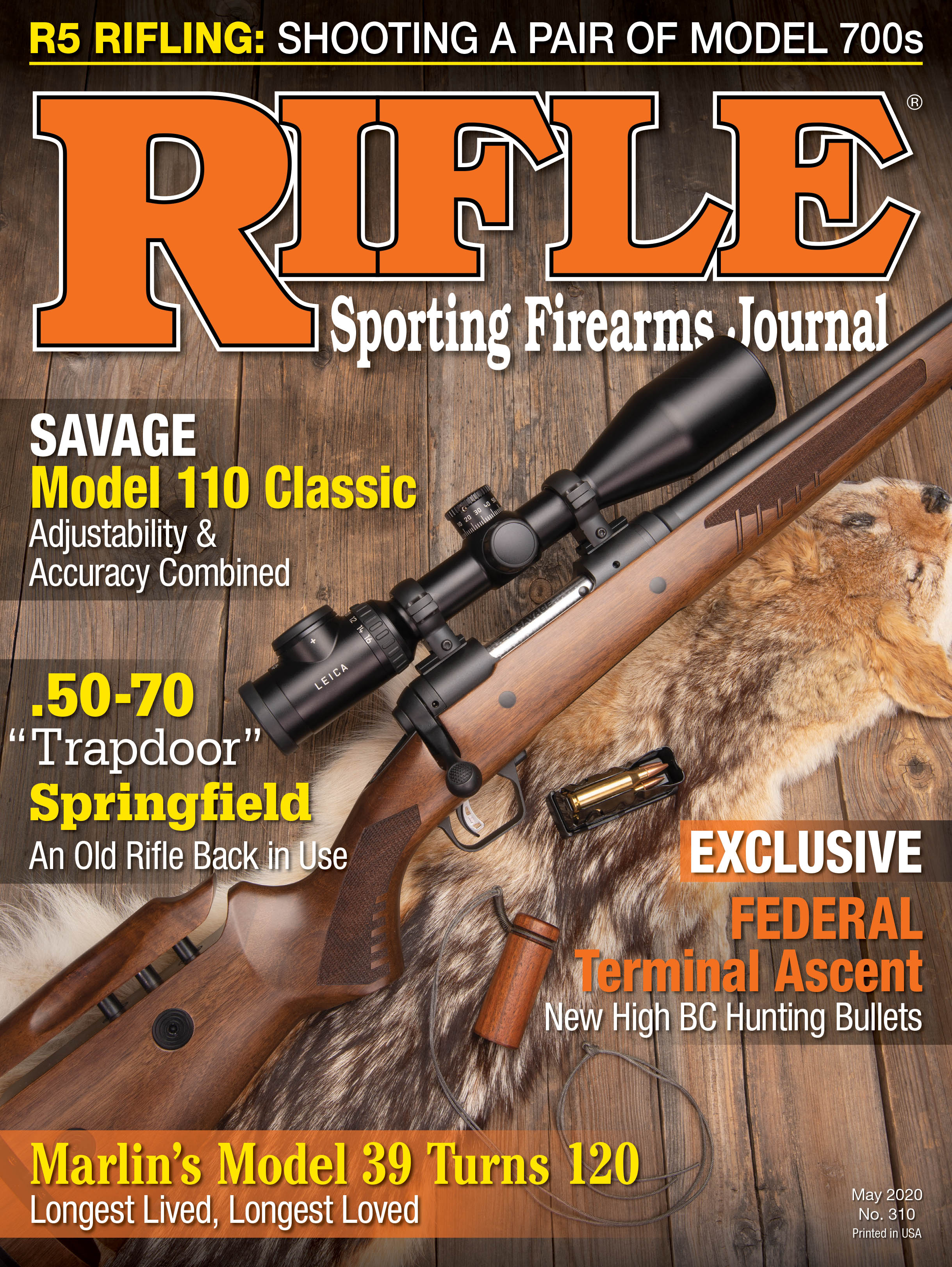Marlin's Model 39 Turns 120
Longest Lived, Longest Loved
feature By: Terry Wieland | May, 20

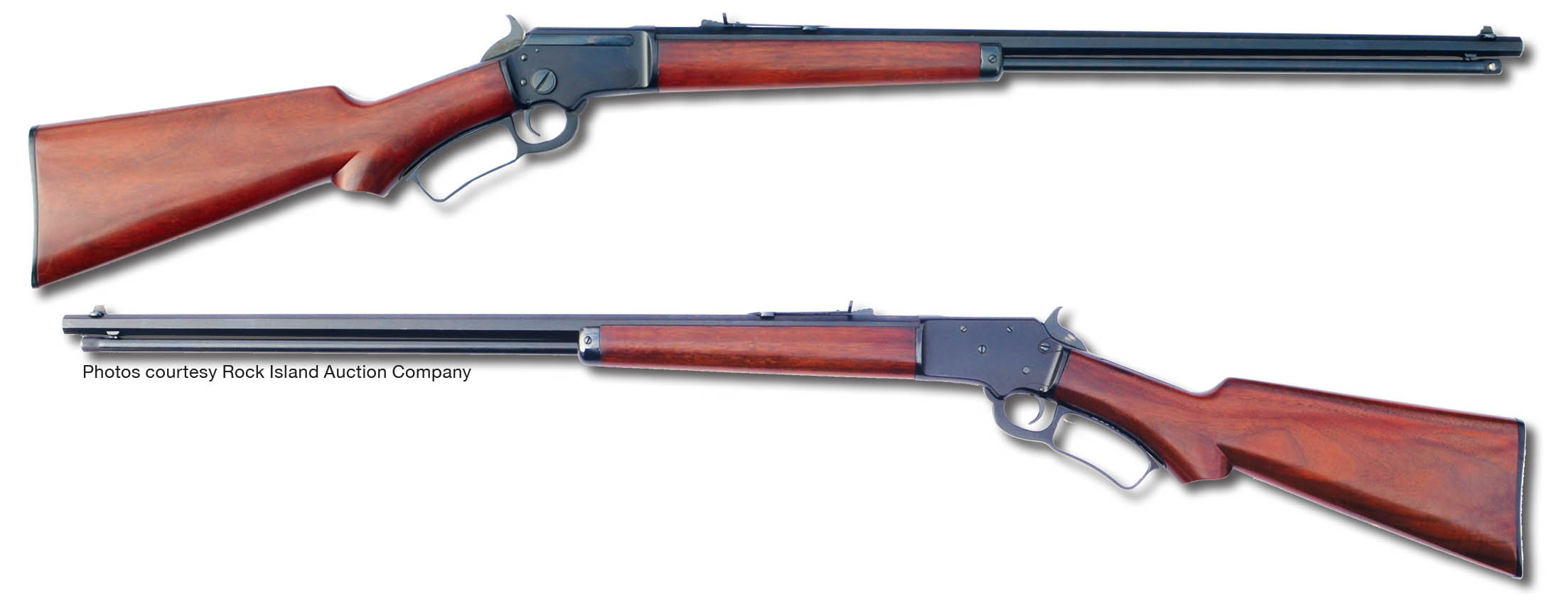
Today, the Model 57 I so admired has been consigned to the scrap heap of history, discontinued in 1965 as an intriguing concept that didn’t work out, while the old Model 39A is still with us, still being made (albeit as a custom proposition) and, while a used Model 57 sells for relative peanuts even to its minor cult following, Model 39 variations are collector’s items that sell for good money, sometimes big money. Obviously, a lot of people knew a lot more than I did about what was a good rifle and what was not.
If that statement needs reinforcement, consider this: At last count, the Model 39A and its antecedents had been in production almost 130 years, and Marlin has sold more than 2.2 million of them. By comparison, the Model 57 was in production a mere six years, during which time fewer than 35,000 were made. During its 130 years, the 39 has chalked up a number of firsts: It was the first lever action for the .22 Long Rifle, and the first to be able to handle .22 Short, Long and Long Rifle cartridges interchangeably in its (also revolutionary) tubular magazine. This magazine was also the first to offer loading from the front rather than being fed through a gate in the action.
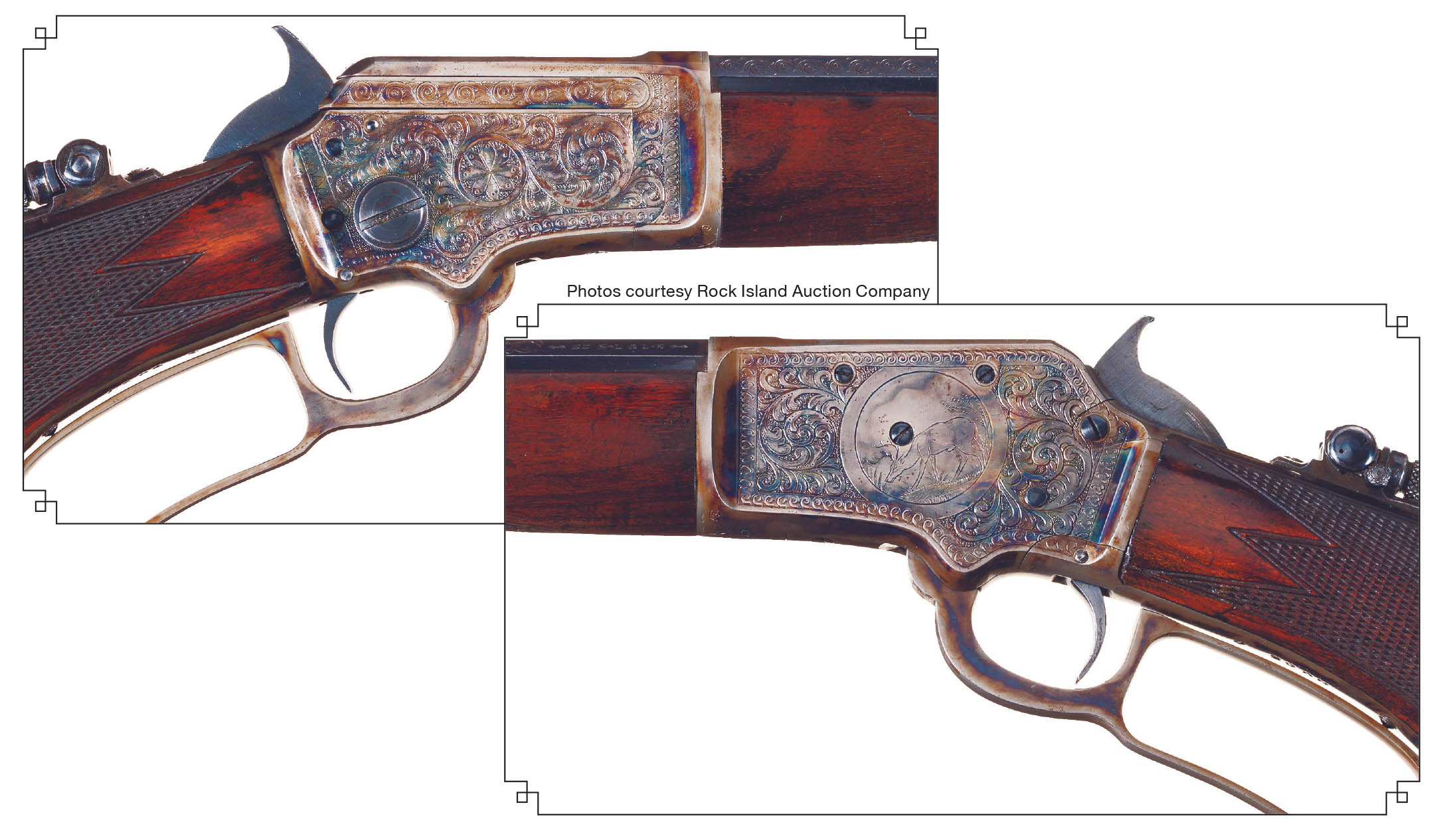
During those 130 years, the rifle that became the Model 39A underwent both technical modifications and cosmetic changes. There were also different models and options, at least for a while, and Marlin offered it in several grades, up to and including the very finest, during the heyday of American engraving and rifle embellishment of the 1920s. As a result, a collector could concentrate on just the Marlin Model 39, its forerunners, variations and grades; if he managed to obtain every variation possible, it would comprise a substantial collection.
The Model 39 managed to survive about a half-dozen changes in corporate ownership and management structure, and many of the cosmetic changes over the years were made to accommodate changing tastes of either the buying public or the company management. As well, at one point the company deliberately eliminated most of the options available, such as different barrel lengths or grip styles, in order to simplify and reduce costs. This was the opposite of the policy of some of Marlin’s competitors such as Savage and Winchester, which seemed intent on overwhelming potential buyers with choices in every conceivable area.
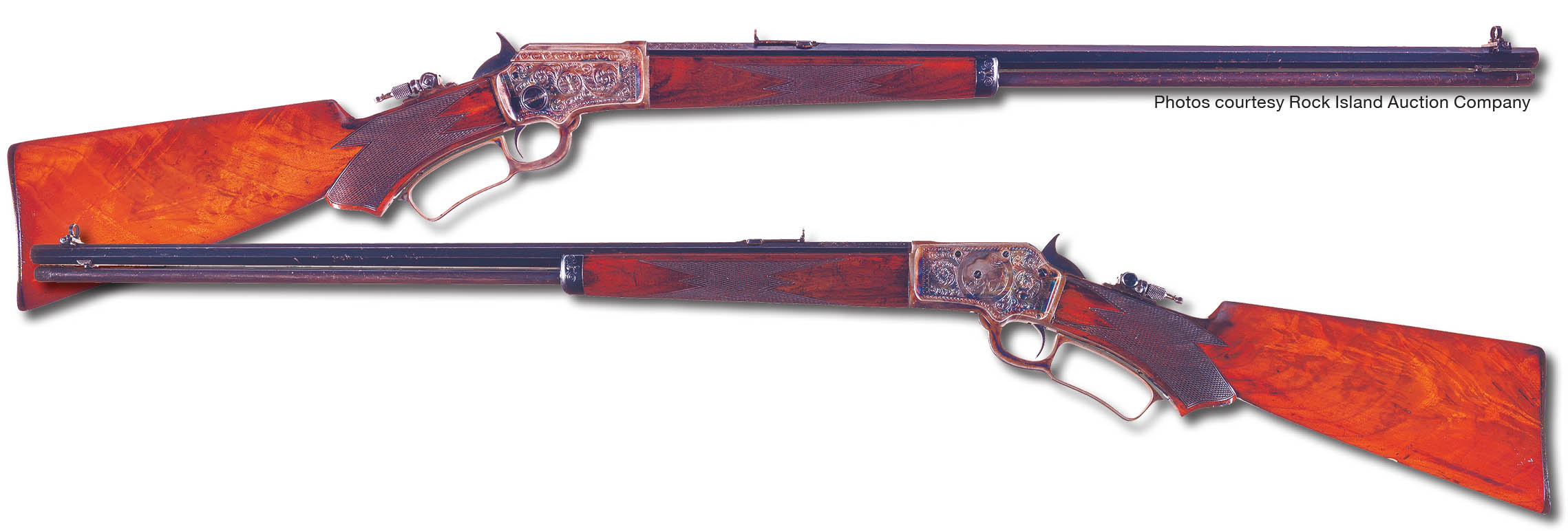
By 1965, there was a choice of three different models (39A, 39 Mountie and 39 Carbine) and that was it. The price was the same for all: $79.95. Compare that with the big-game 336 ($89.95) and the Model 57 ($56.95), and it is easy to see where the 39 fit into the lineup. It was right near the top.

To begin with the major technical changes, the original Model 1891 had a tubular magazine fed through a gate in the action similar to the Winchester 92. This was slow to load and did not work well with .22 rimfire ammunition, so a “loading tube” was developed wherein a separate tube was filled with ammunition, its mouth placed inside the gate and the rounds pushed home. The Model 1891 also had a removable sideplate for easy cleaning that was held in place by a large knurled screw on the right-hand side.
The Model 1892 replaced the original tubular magazine with one that could be loaded from the front. This consisted of a tube within a tube. Sliding the outer tube forward exposed an opening for dropping in the cartridges. A magazine cutoff regulated how the cartridges entered the receiver, allowing the use of .22 Shorts, Longs, and Long Rifles interchangeably, while a cartridge guide ensured smooth feeding into the chamber. The 1892 only became available in 1896 but remained in production until 1916.
In 1897, Hepburn redesigned the rifle to be a takedown, with one half of the receiver attached to the barrel, the other half to the buttstock and the pieces held together by a knurled screw placed where the sideplate release screw was situated on the earlier models. As the Model 1897, this too remained in production until 1916.

On March 10, 1893, Oakley fired 25 shots in 27 seconds from her Marlin 1891, putting them all into one ragged hole in the center of an ace of hearts at a range of 12 yards. It became one of the most famous playing cards in history, appearing in Marlin ads for years to come. (The legend lives on: To this day, a free theater ticket is known as an “Annie Oakley” because they are traditionally punched with a hole to prevent resale.)
In 1893, having Annie Oakley as ambassador for your company was a coup of tremendous proportions. She was not just an accomplished trick shooter – probably the best all-around shot in American history – she was also a genuine media superstar, and her influence reached into many disparate corners.

Born in Ohio in 1860, enduring a rural childhood of poverty and considerable hardship, Oakley was a natural rifle shot who reportedly paid off her widowed mother’s mortgage by the age of 15 with the proceeds of her market hunting. Oakley’s skill with a rifle eventually took her to “Buffalo Bill’s Wild West” show, where Sitting Bull bestowed on her the nickname by which she became known, “Little Miss Sure Shot.” There followed tours of Europe, where she performed for Queen Victoria and Kaiser Wilhelm II, among others. But Oakley was more than a performer. She campaigned for women’s rights and said she hoped to see the day when women would handle guns “as naturally as they do babies.” She believed in skill with a gun for self-protection and personally taught more than 15,000 women how to shoot. When the Spanish-American War broke out in 1898, she wrote to the president, offering to raise a company of female sharpshooters. The offer was declined, but she made her point.
At 5-feet tall and just 100 pounds, Oakley was a tiny woman with a huge influence, inspiring a half-dozen biographies, several movies, a television series, a hit Broadway musical and then both television and movie versions of the musical. She has been played by actresses from Barbara Stanwyck and Ethel Merman to Geraldine Chaplin, Jamie Lee Curtis and Reba McEntire. Oakley is still a household name, almost a century after her death, while her contemporary rivals are dusty memories at best. As for today’s self-styled “superstars,” they can’t hold a candle to Annie Oakley.
Obviously, to have it known that Oakley performed with, and loved, one of your rifles was publicity money could not buy – and unlike most short-lived celebrity endorsements, it carried weight throughout the life of the rifle, out-living Oakley herself by almost a century. She later acquired a Model 1897 as well, but the 1891 remained her favorite. She gave the rifle a reputation for reliability, durability and accuracy that endures to this day.
Philip B. Sharpe, one of the foremost rifle writers of the twentieth-century, was a wholehearted devotee of the Model 39, writing that it was one of the best made and most accurate .22s on the market – perhaps the best .22 ever made. Bob Wallack, another writer and firearms expert of the 1960s, said the Model 39 had proven itself “beyond any question.” For many years, it was without competitors in the lever-action .22 market, and Wallack believed this was because it was so good, other companies simply didn’t bother to try.
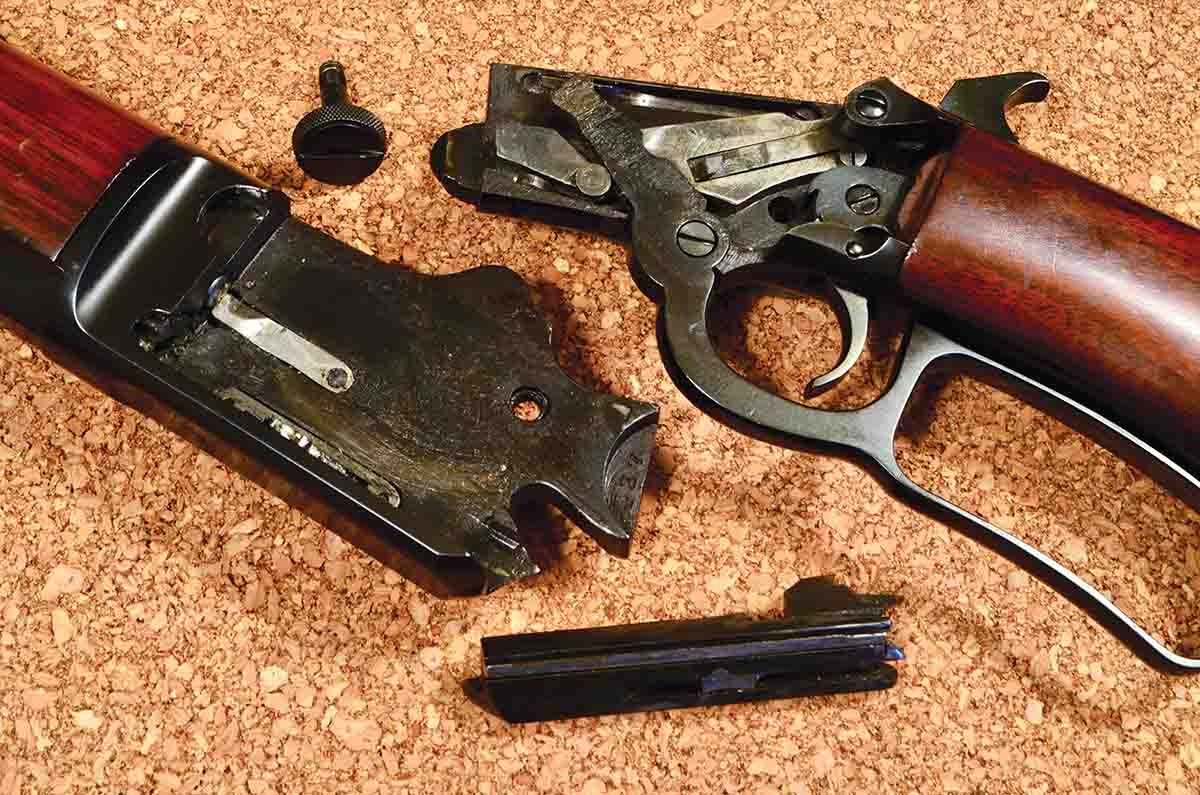
An interesting point, based on admittedly limited exposure, is that many of these rifles are in very good shape. It’s well-known in the used-gun business that higher grade, higher quality rifles might have been used hard but are generally well-looked after. Buyers of Marlin 39s who stumped up the extra money apparently felt they were buying quality and treated the rifles accordingly.
To handle a Marlin 39 is, for a modern shooter who has never done so, a revelation. They are beautifully made of steel and American walnut, with only the buttplate sometimes deviating from that rule. They are finely finished inside and out, with no plastic or aluminum, and have a solid feel that few modern rifles, even very expensive ones, manage to achieve. A big advantage of this level of original materials and workmanship is that, in the right hands, almost any rifle can be beautifully restored.
As an experiment, I loaded a 1930s-era Model 39 with 25 .22 Shorts and attempted to emulate Annie Oakley’s feat with the ace of hearts. Shooting at an 8-inch steel plate at 15 yards, I managed to fire those 25 shots in 45 seconds, scattering the bullets and missing the plate completely half a dozen times. The important thing, though, is that the rifle functioned like a dream, no jams, no hesitations, no failures to feed or eject. I then switched to .22 Long Rifle and put another 150 of those through the gun. No malfunctions of any kind there, either, and this with a rifle that is almost 90 years old and has spent those 90 years who knows where?
In a way, the Marlin 39 is an anomaly – a hold over from an age when rifles were made differently, and regarded differently. New models and variations did not come along every year, trumpeted to the skies at the SHOT Show, and reputations were earned the hard way. The Marlin 39s are not just great American .22s, they are great American rifles, period.


